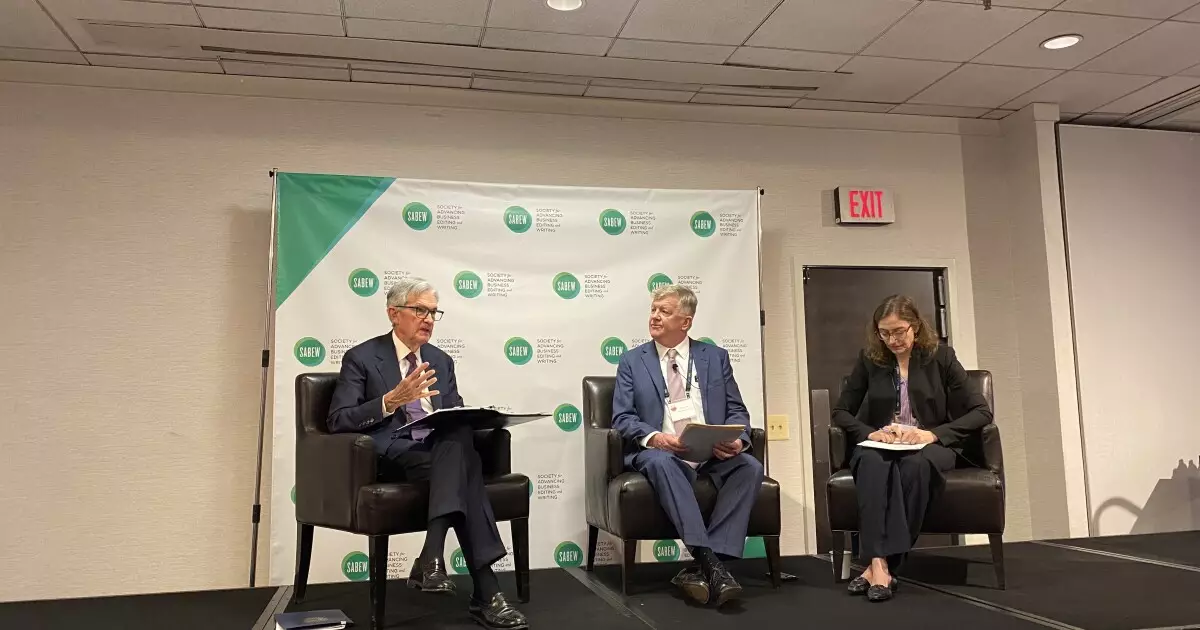The economic landscape is changing rapidly under the Trump administration, marked by controversial policies on tariffs, immigration, and government spending. Jerome Powell, the chair of the Federal Reserve, acknowledges the uncertainty surrounding these changes but emphasizes the need for careful observation before making significant monetary policy adjustments. As these new policies take root, they inevitably raise questions about the long-term economic ramifications that deserve a deeper exploration.
As it stands, the Federal Reserve has opted for a cautious approach, favoring a wait-and-see stance on interest rates. Powell stated, “It’s just too soon to say what the appropriate monetary policy response to these new policies will be.” This statement reflects a broader reluctance to disturb a system that, as Powell notes, is still in a favorable condition, characterized by promising labor market metrics and curbing inflation. However, the efficacy and eventual impact of these policies could tip the scales toward a less favorable outcome.
Consumer Spending: A Double-Edged Sword
The critical question lies in how consumer sentiment will adapt as Trump’s policies become fully effective. Consumer spending is notoriously the engine of the U.S. economy—accounting for around two-thirds of GDP. Powell points out that while consumers might recognize the elevated prices stemming from persistent inflation, their spending habits do not always align with their sentiments. An intriguing paradox exists: consumers have continuously shown an ability to spend, even amidst uncertainty and financial strain. “Sometimes the surveys are very negative, and they keep spending… People spent right through the pandemic,” Powell asserts.
This disconnect raises alarms for economic analysts. If consumers continue to spend despite rising costs, it may provide a temporary cushion for growth. But what happens when the realities of Trump’s high-tariff policies hit home? The potential for stunted economic growth becomes a real concern, particularly since households may eventually run out of financial resilience to withstand persistent inflationary pressures.
Short-Term Gains vs. Long-Term Stability
Another critical dimension to consider is the apparent contradiction between short-term economic indicators and long-term stability. Powell noted that although the labor market remains balanced and aligned with price expectations, the impending tariffs could impose an unexpected burden on businesses and consumers alike. He indicated that tariffs are likely to be more substantial than foreseen, meaning their economic effects could unsettle markets and consumer confidence. If these indicators begin to slow down, the perceived stability upheld by the Federal Reserve could quickly unravel, leading to an economic turmoil reminiscent of the stagflation era in the 1970s.
It’s crucial to ponder the implications of the Trump administration’s bold maneuvers. While they may spark short-term economic growth, the long-term impacts could threaten to render the economy more fragile than it currently appears. As tariffs raise costs, companies may have to reconsider their investment strategies, potentially leading to layoffs and a reduction in consumer spending, creating a vicious cycle of economic stagnation.
The Balance Between Political and Economic Realities
Powell’s role as the Fed chair positions him uniquely at the nexus of economic diplomacy and policy-making. He insists that the Federal Reserve must remain nonpolitical, despite the overarching influence of political policies on economic outcomes. Yet this balance is precarious. The realities of Trump’s administration are laced with political rhetoric that can stifle long-term planning necessary for economic health.
By choosing to remain in his position, Powell faces a daunting task ahead. He understands the need to refocus the Fed’s efforts on its dual mandate of maintaining both price stability and maximum employment. The challenge lies in doing so while navigating an unpredictable political landscape rife with populist sentiments. His nonpartisan stance may serve as a shield against politically charged scrutiny; however, the challenge ahead will require more than neutrality—it demands clarity, vision, and foresight in dealing with a fluid and often hostile economic environment.
As the U.S. economy stands on the precipice of significant change, the unfolding narrative is anything but straightforward. Trump’s policies will exert profound effects that demand ongoing vigilance from both Federal Reserve officials and the business community. The extent to which these new approaches will bear fruit—or bring strife—remains shrouded in uncertainty. For many, the stakes have never been higher. The potential for a robust economy is within reach, but the winds of policy change could just as easily set us on a path fraught with economic peril.


Leave a Reply